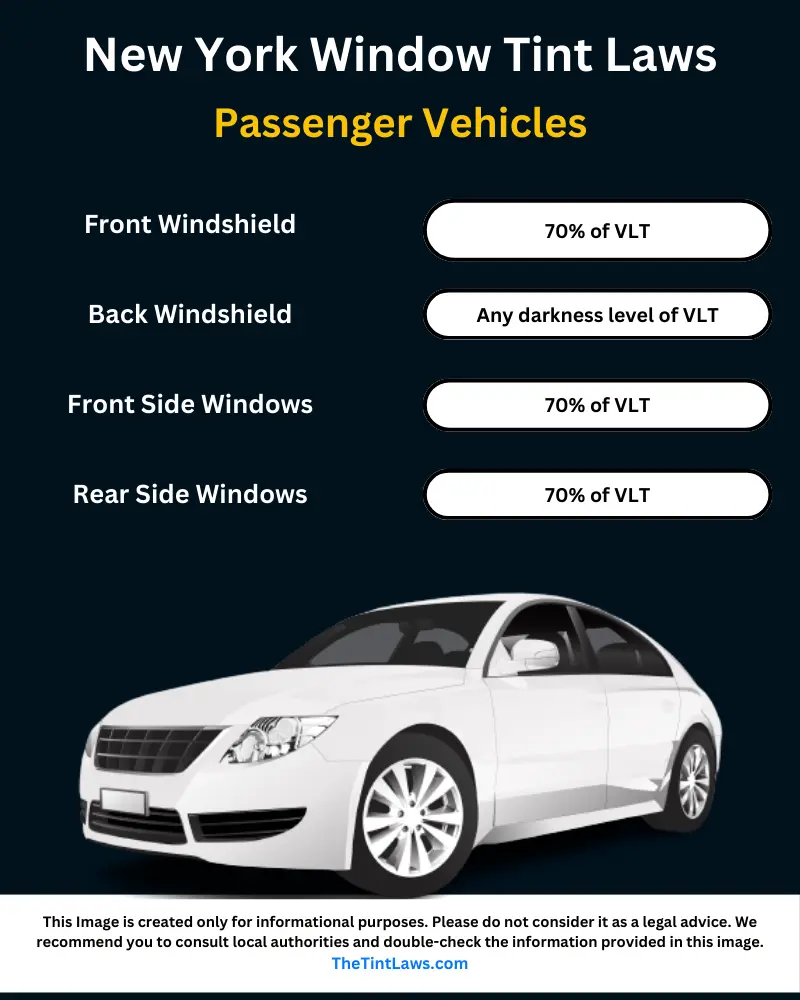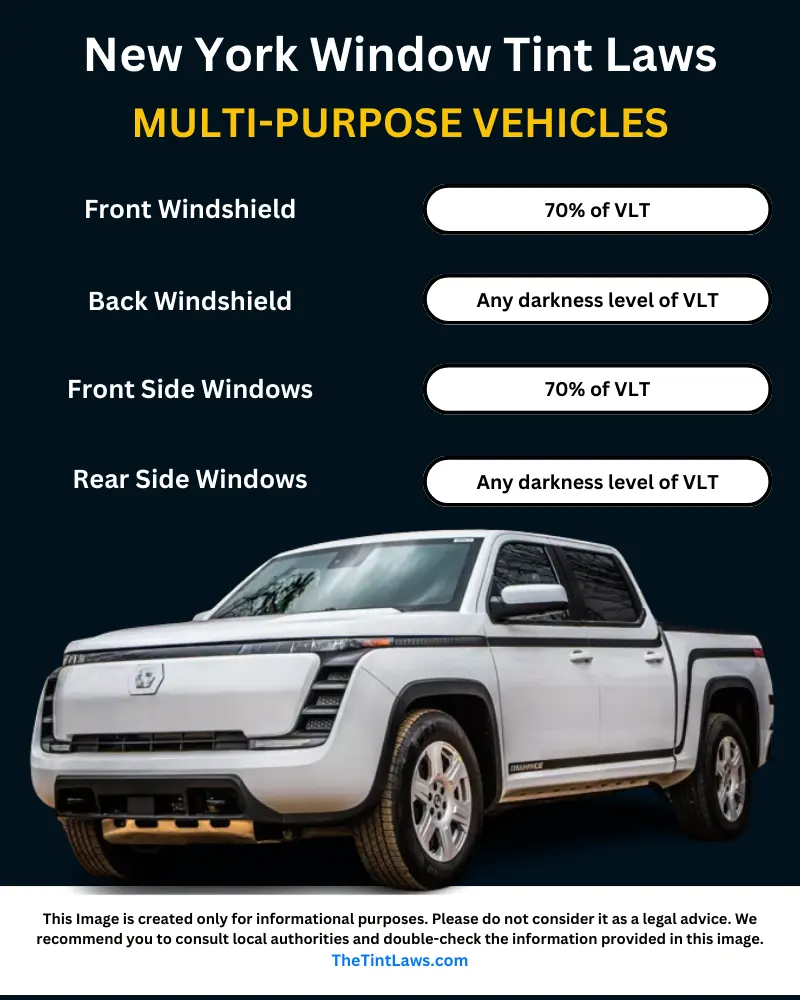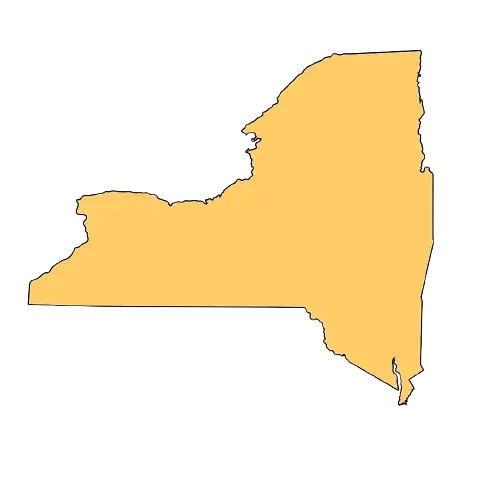Keeping your car cool and your belongings protected with window tint is a popular choice for New York drivers.
But before you get your windows tinted, understanding the New York tint laws is crucial to avoid fines and ensure safe driving.
This guide will break down everything you need to know about legal tint in NY.
Window tint laws in New York were enacted in 1991. The darkest legal tint in New York is 70% of VLT.
New York Tint Laws:
Window tint darkness is measured by Visible Light Transmission (VLT), which indicates the percentage of light allowed through the tinted window. Here’s a breakdown of legal tint darkness for different vehicle types.
Legal tint darkness for sedans:
- Windshield: The top 6 inches can be any darkness with non-reflective tint, but the rest must allow at least 70% VLT.
- Front side windows: More than 70% of VLT should be allowed.
- Back Side windows: More than 70% of VLT should be allowed.
- Rear window: Any darkness is permitted with side outside mirrors.

Legal tint darkness for SUV and Van:
- Windshield: The top 6 inches can be any darkness with non-reflective tint, but the rest must allow at least 70% VLT.
- Front side windows: More than 70% of VLT should be allowed.
- Back Side windows: Any darkness is permitted.
- Rear window: Any darkness is permitted.

Important Note: It’s crucial to remember that these are the minimum VLT requirements. You can have lighter tint (higher VLT percentage) as long as it meets the legal limit. However, anything darker than the specified VLT is considered illegal.
Window tint reflection in New York:
New York Tint Laws restrict the level of reflection for car window tinting.
Tint Reflection for sedans:
- Front Side windows: No mirrored or metallic appearance.
- Back Side windows: No mirrored or metallic appearance.
Tint Reflection for SUV and Van:
- Front Side windows: No mirrored or metallic appearance.
- Back Side windows: No mirrored or metallic appearance.
New York Window Tinting Rules and Regulations:
- Side mirrors: Both side mirrors are required in case of a 70% tinted rear window.
- Restricted Colors: There is no restriction about using any tint color by the New York car tinting laws.
- Certificates: Film certification is required by the film manufacturers according to state law.
- Stickers: A tint certification sticker for legal identification must be placed on each tinted window between the window glass and tint film.
- Window tint exemptions: New York tinting laws allow medical exceptions. Drivers with medical conditions requiring protection from direct sunlight may be eligible for a medical exemption from the tint restrictions.
New York state window tint exemption application form MV-80W (PDF)
New York tint law reference: New York DMV – Tinted Windows Law
Information about New York State
Nestled in the Northeastern region of the United States, New York State stands as a beacon of diversity, culture, and innovation. As the 27th-most extensive state, it boasts a landscape as varied as its populace, ranging from the urban jungle of New York City to the picturesque beauty of the Adirondack Mountains.
Often affectionately referred to as “New York State” to distinguish it from its iconic metropolis, the state encompasses a rich tapestry of history, culture, and natural wonders, making it a captivating destination for travelers and a vibrant home for its diverse population.

With a population ranking third highest in the nation and a density that ranks seventh, New York hums with the energy of millions of residents and visitors alike. Bordered by New Jersey and Pennsylvania to the south, and by Connecticut, Massachusetts, and Vermont to the east, it shares its maritime borders with Rhode Island east of Long Island, and international borders with the Canadian provinces of Ontario and Quebec to the west and north respectively.
Capital
Albany
Population
19,571,216
Area
54,556 mi² (141,297 km²)
Cities in New York State
New York City, Buffalo, Rochester, Yonkers, Syracuse, Albany, New Rochelle, Mount Vernon, Schenectady, Utica, White Plains, Hempstead, Niagara Falls, Troy, Binghamton, Freeport, Valley Stream, Long Beach, Rome, North Tonawanda, Ithaca, Poughkeepsie, Jamestown, Elmira, Newburgh, Middletown, Auburn, Glen Cove, Saratoga Springs, Peekskill, Kingston, Lockport, Plattsburgh, Cortland, Amsterdam, Oswego, Lackawanna, Batavia, Watertown, Olean, Gloversville, Oneonta, Geneva, Dunkirk, Fulton, Oneida, Corning, Ogdensburg, Canandaigua, Beacon, and Glens Falls.
Counties in New York State
Albany, Allegany, Bronx, Broome, Cattaraugus, Cayuga, Chautauqua, Chemung, Chenango, Clinton, Columbia, Cortland, Delaware, Dutchess, Erie, Essex, Franklin, Fulton, Genesee, Greene, Hamilton, Herkimer, Jefferson, Kings (Brooklyn), Lewis, Livingston, Madison, Monroe, Montgomery, Nassau, New York (Manhattan), Niagara, Oneida, Onondaga, Ontario, Orange, Orleans, Oswego, Otsego, Putnam, Queens, Rensselaer, Richmond (Staten Island), Rockland, Saratoga, Schenectady, Schoharie, Schuyler, Seneca, Steuben, Suffolk, Sullivan, Tioga, Tompkins, Ulster, Warren, Washington, Wayne, Westchester, Wyoming, Yates.